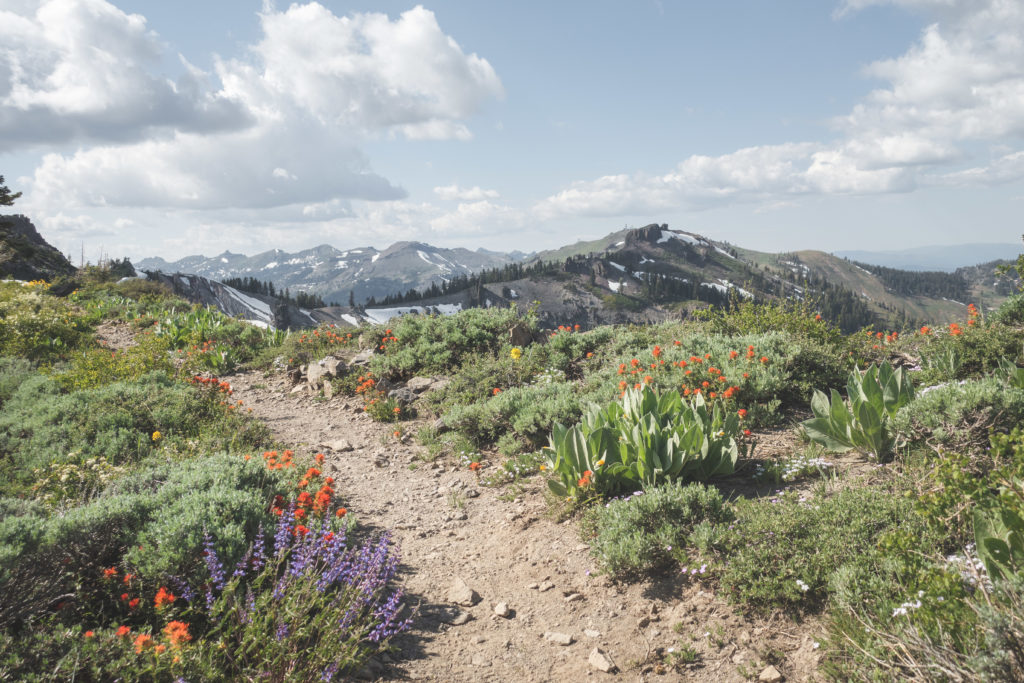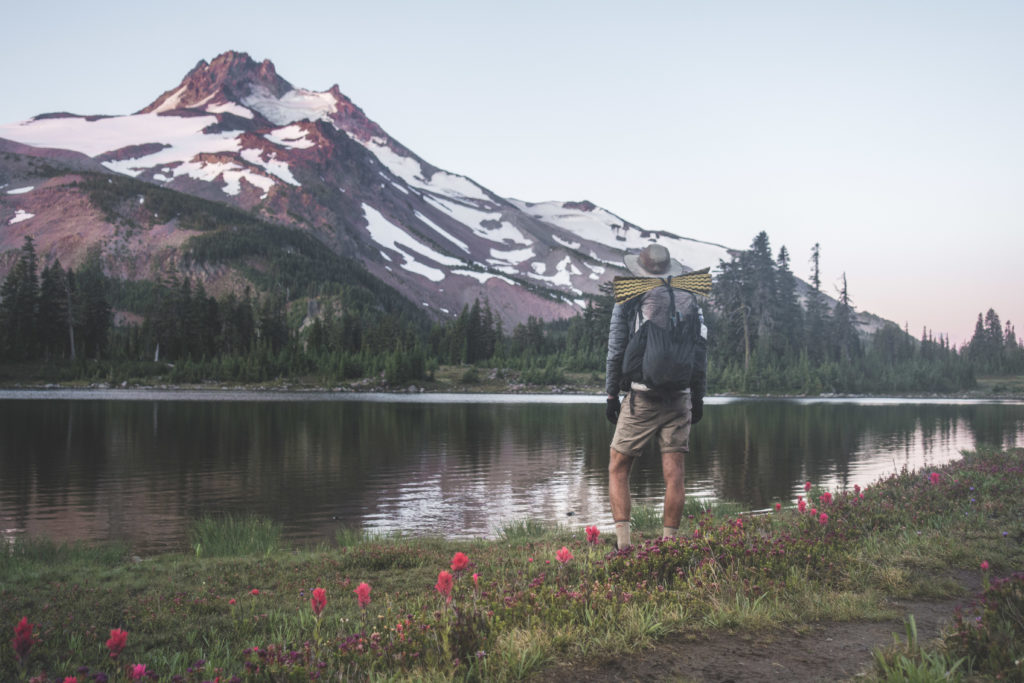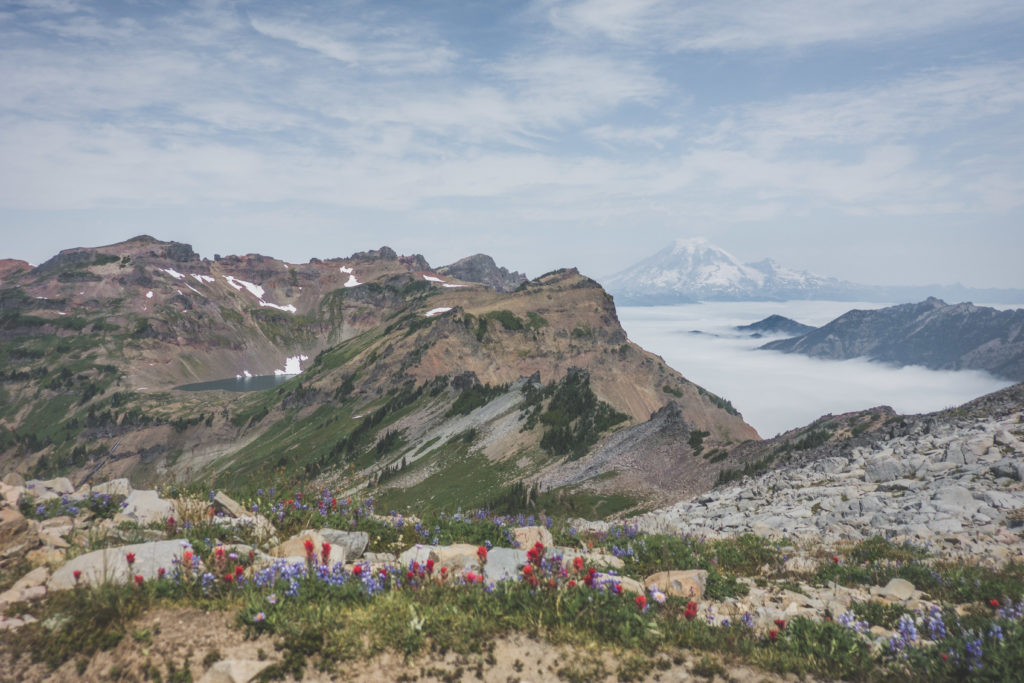May is the Best Time to Start the Pacific Crest Trail
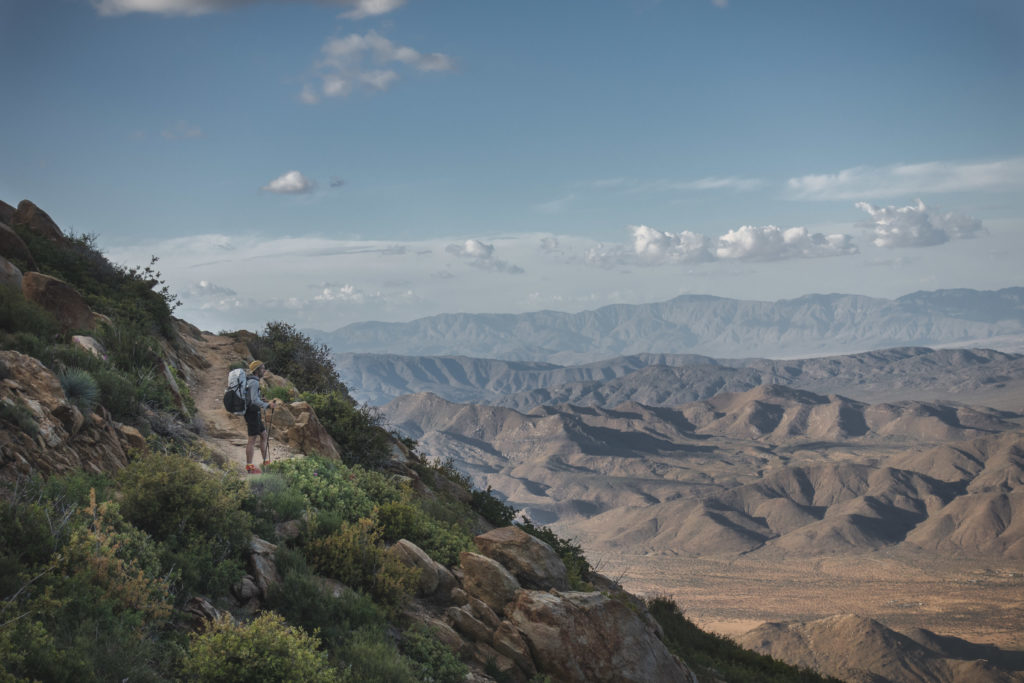
First of all, the title of this blog post is purposefully clickbait-y and should be disregarded as advice. The best start date for a PCT thruhike is an individual decision and varies greatly depending on the hiker’s fitness, style, time constraints and direction of travel, plus the snow conditions for the given year. There’s lots of good info on this topic out there and I don’t have much to add to the discussion, so I won’t actually give any proper advice. However, I felt that it was important that a post with the above title exist out in the blogosphere, so I made one. Read on to find out why, followed by the advertised reasons for starting in May.
Some of the top current search engine results for “best start date for the Pacific Crest Trail” are blog posts that recommend starting a thru in March. They do so pretty heavy-handedly, without any real consideration for the individuality and appropriate considerations of the start date decision that I alluded to earlier. Those blog posts have been widely read and shared in recent years, and aren’t really balanced out with other blog posts that recommend starting in other months.
So imagine you’re an inexperienced hiker planning an upcoming PCT thru. The permit lottery is coming up and you need to figure out your planned start date. You turn to Google, the same place we all do in times of uncertainty these days and ask it “best start date for the Pacific Crest Trail”. This is a summary of what you get on the first page:
- Some statistics from the PCTA, Halfway Anywhere, and the US Forest Service showing that most northbound thruhikers start in mid-April;
- A balanced and detailed blog post from 2FootAdventures that discusses the pros and cons of an early or late start;
- A blog post from a hiker named Longstride that started in March;
- A blog post from a hiker named Beta that says mid-March is the best time to start and April is the worst; and
- A blog post from a hiker named Shuffles called “8 Reasons to Start a NOBO PCT Hike in March”.
Notice any bias? The front page of Google results makes a pretty convincing argument for starting in March, flying in the face of the traditional wisdom to start later in the year than that. And based on my experience on the trail in 2019, it seemed that those search engine results were having a real effect out there. By the time I left Campo on May 10, a date that I found to be pretty much ideal, especially considering the massive Californian snowpack of 2019, most thruhikers were way ahead of me. They were progressing very slowly and hesitantly towards the high-altitude Sierra Nevada mountains to give more time for the snow to melt, or sometimes not progressing at all, instead sitting in towns just waiting for summer. My hunch is that some of that behaviour can be attributed to the search engine results I listed above, which overemphasize the benefits of an early start.
So, here I am, trying to be the counterpoint to the existing blogs, telling you about all the benefits of a May start. This is my contribution to a more balanced set of web resources on the topic. Here we go. The benefits are:
1. Less snow in Southern California
Hikers that start in early spring will have to deal with snow conditions within the first few hundred miles, especially around Mts. San Jacinto and Baden Powell. Not you, if you started in May. That means you’ll be free of the burden of heavy snow gear like microspikes and an ice axe for the start of your hike.
2. Less crowding
If you start in May, you’ll have relatively few hikers around you since most will have started earlier. That means more peace and quiet, more choices for good camping spots, less competition for limited hotel rooms and groceries in town, and less chance of water caches being depleted. Not only that, but by the time you catch up to the “herd”, you’ll be in the Sierra, and many hikers will have quit the trail by then, meaning you’ll never really be in a herd at all.
Maybe more important than the benefits off less crowding for your hiking experience and soul are the benefits it bring to the environment and trail itself. When a hundred of hikers try to walk, sleep, and poop in the same place at the same time, the impacts are noticeable and more permanent. When those same hundred people spread themselves out over time, the trail is more readily able to handle the impacts and heal from them.
If you do want to be social, there will still be more than enough hikers around in May to make friends with, just not to the point of feeling crowded.
3. Summer in the Sierra
Starting the PCT in March or April will bring a thruhiker into the Sierra Nevada Mountains above 10,000 feet in May or early June, where they risk exposure to spring snowstorms, avalanches, and peak snowmelt in the creeks, increasing their chances of frostbite, hypothermia, and drowning. Starting the hike in May will get you into the Sierra in mid to late June as summer is starting, when you can expect clear blue skies and creeks not quite so swollen or dangerous as they were a couple weeks earlier.
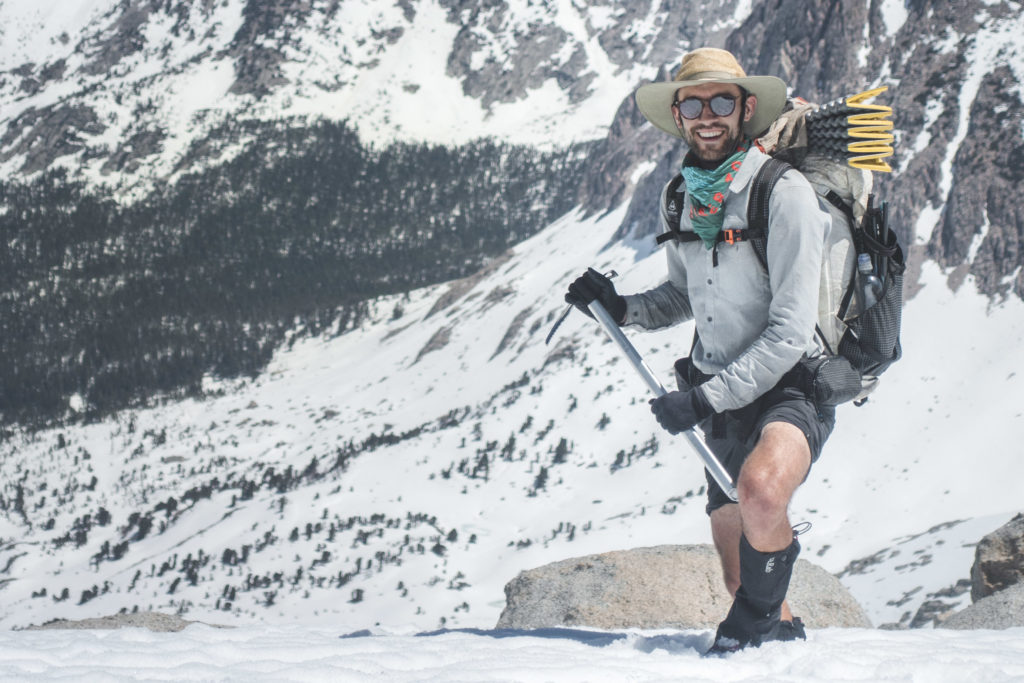
Sunshine and shorts in the Sierran summer
4. More available beta
“Beta” is the outdoorsy term for when a person that has done a route before you tells you all about it, giving you the benefit of their hindsight. Because you’ll be behind the herd if you start in May, The Guthook Guides app and other crowd-sourced platforms will be full of information from hikers that have gone before you about the best campsites, motels, grocery stores, and trail angels (and which ones to avoid) by the time you’re looking for that info.
5. Save Money
While the best start date for a northbound PCT thruhike is often debated, the latest acceptable finish date in Canada is mostly not, with hikers almost unanimously agreeing that one should be done by mid-September to avoid fall snowstorms in the North Cascades of Washington. That means that those March and April starters will likely end up spending their life savings (or worse, credit card debt) on their 5-6 month thruhikes (some of it possibly just waiting in Tehachapi or Kennedy Meadows for the snow to melt) while you will not, as it won’t even be an option. You’ll continue working in the spring, saving up money until your May start and then having a relatively inexpensive 3-4 month thruhike.
While working an extra month and spending less of the year hiking may not seem like a benefit for someone trying to live the dirtbag lifestyle, I think it is when you consider the long term. I think a person can be unemployed and hike for four months of every single year while still saving money towards a home and retirement and still enjoying a good quality of life. I don’t think the same is possible for six-month stints on trail, which are more “once in a lifetime” types of deals.
6. Chase the wildflowers
A meadow of alpine wildflowers may just be the most beautiful sight on earth, made even more special by the fact that it only lasts for a only few weeks per year in any location. Well, if you start a northbound PCT thruhike in May and move fast enough, you just might be able to walk among the blooming colours for the entire summer. You’ll catch the Poppies and Lupine in Southern California in May, Western Columbine in the Sierra and Mule’s Ear in Northern California through June and July, and finally Daisies in Oregon and Paintbrush in Washington through July and August, bringing you an almost unfair amount of beauty for months on end as you walk north chasing the seasons.
My last warning
Once again, if you’re actually looking for advice on when to start, do more research beyond this blog post. Your ideal start date will depend on many factors specific to you and the conditions of the given year, and being in the mountains in the wrong time can cost you your life. This is only one side of the coin and a May start is not for everyone or every year. I just wanted to get this info out there to hopefully balance out all the resources advising a March start.
